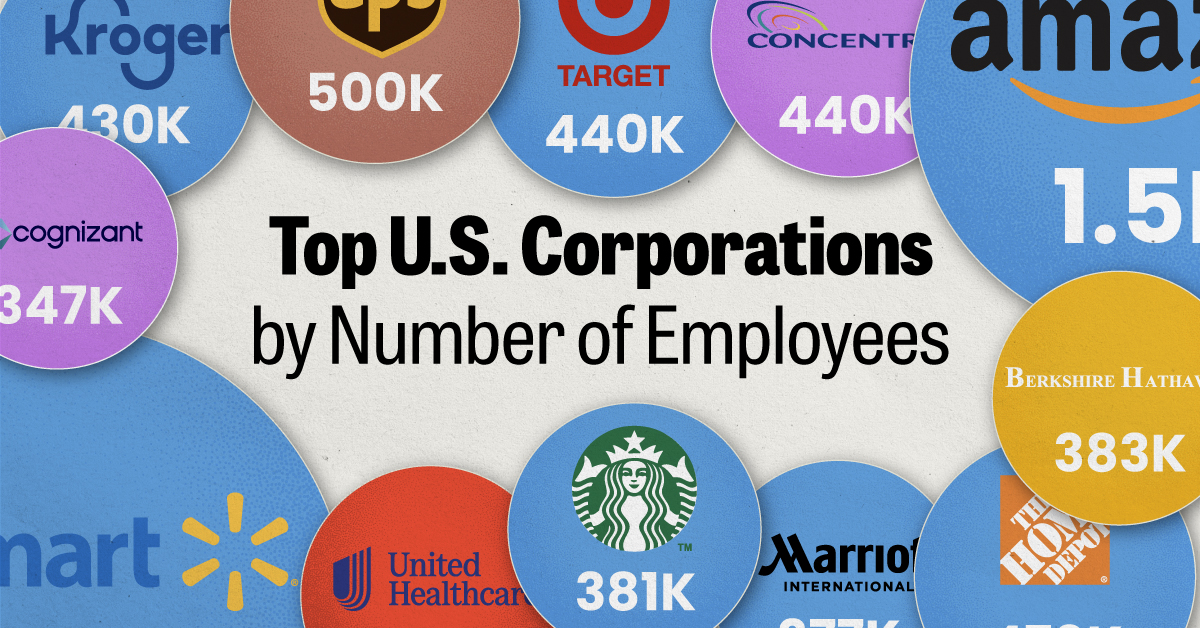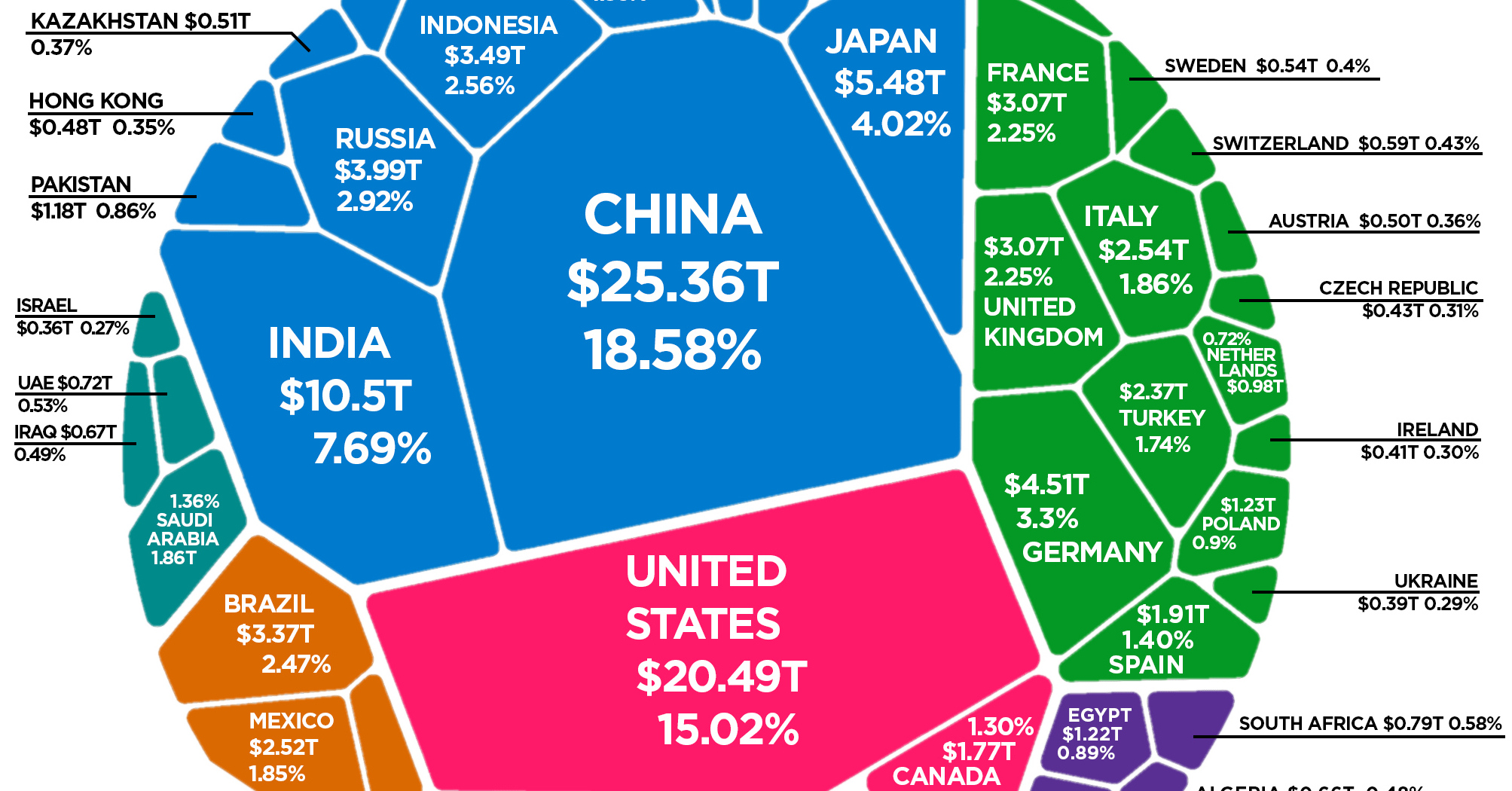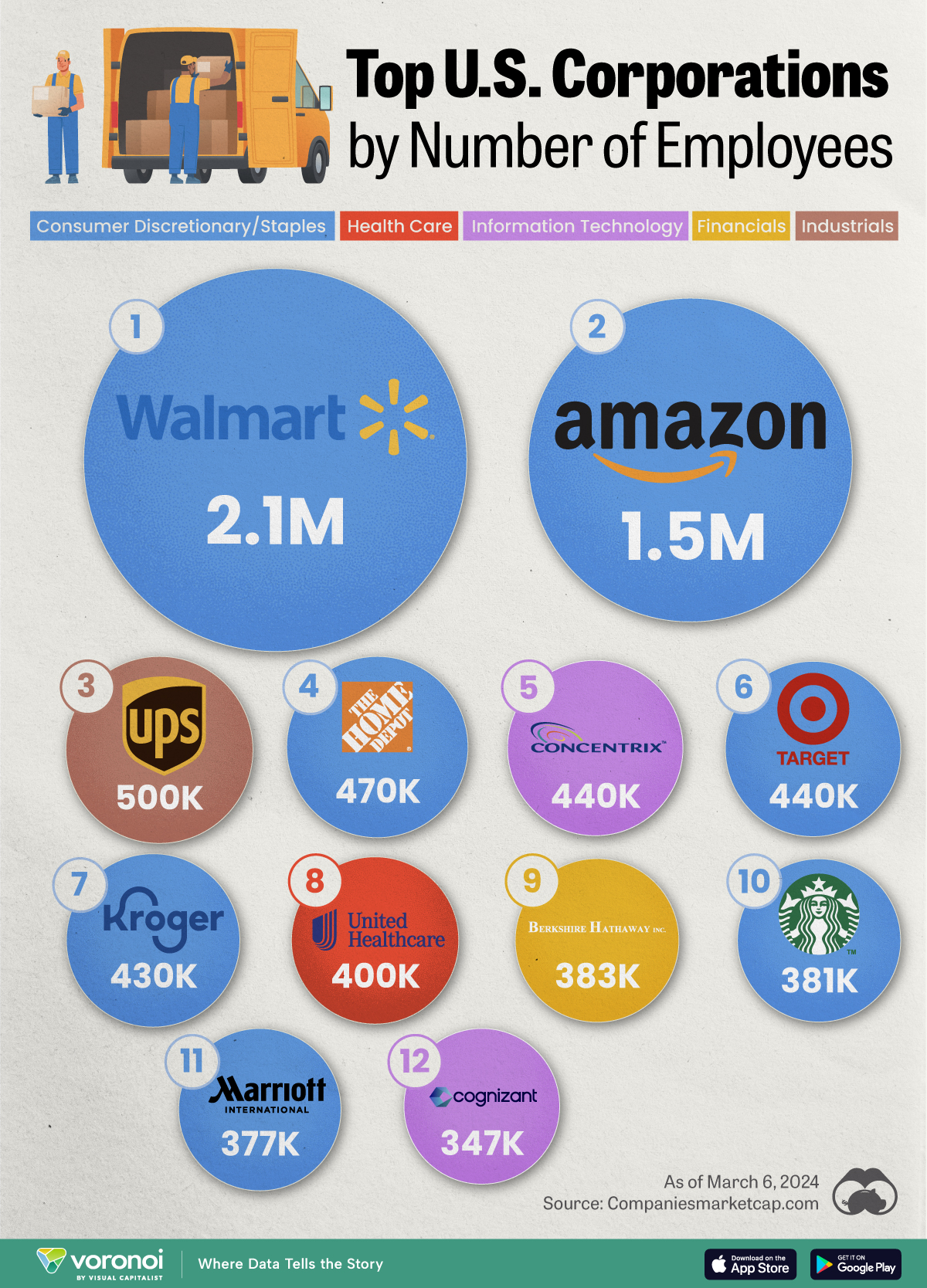Markets
Visualizing the Composition of the World Economy by GDP (PPP)

The Composition of the World Economy by GDP (PPP)
Earlier this month, we showed you the world’s $86 trillion economy broken down by country, using nominal GDP calculations.
While this is one useful way to view the global economic picture, it’s not the only way.
Today’s visualization, which comes to us from HowMuch.net, is similar in that it also uses a Voronoi diagram to display the composition of the world economy by GDP. However, by adjusting data for purchasing power parity (PPP), it produces a very different view of how global productivity breaks down.
What is PPP?
Purchasing power parity, or PPP, is an economic theory that can be applied to adjust the prices of goods in a given market.
In essence, instead of using current market rates for prices (such as in nominal data), PPP tries to more accurately account for differences in the cost of living between countries – especially in places where labor and goods are far cheaper.
When applied to GDP measurements, PPP can help provide a more accurate picture of actual productivity. For example, a taxi ride in Bolivia may be far cheaper than one in New York City, even though it is the same service provided over the same distance.
Applying PPP to GDP figures can help correct for these types of differences.
Ranked: Economies by GDP (PPP)
After adjusting for PPP, how does the composition of the global economy change from the nominal numbers?
Below are the 15 largest economies by GDP (PPP), as well as how their ranking changed from the previous chart, which used nominal data.
| Rank | Country | GDP (2018, PPP) | Share of World Total | Change (vs. nominal rank) |
|---|---|---|---|---|
| #1 | 🇨🇳 China | $25.4 trillion | 18.6% | +1 |
| #2 | 🇺🇸 United States | $20.5 trillion | 15.0% | -1 |
| #3 | 🇮🇳 India | $10.5 trillion | 7.7% | +4 |
| #4 | 🇯🇵 Japan | $5.5 trillion | 4.0% | -1 |
| #5 | 🇩🇪 Germany | $4.5 trillion | 3.3% | -1 |
| #6 | 🇷🇺 Russia | $4.0 trillion | 2.9% | +5 |
| #7 | 🇮🇩 Indonesia | $3.5 trillion | 2.6% | +9 |
| #8 | 🇧🇷 Brazil | $3.4 trillion | 2.5% | +1 |
| #9 | 🇬🇧 United Kingdom | $3.1 trillion | 2.3% | -4 |
| #10 | 🇫🇷 France | $3.1 trillion | 2.3% | -4 |
| #11 | 🇮🇹 Italy | $2.5 trillion | 1.9% | -3 |
| #12 | 🇲🇽 Mexico | $2.5 trillion | 1.9% | +3 |
| #13 | 🇹🇷 Turkey | $2.4 trillion | 1.7% | +6 |
| #14 | 🇰🇷 Korea, Rep. | $2.1 trillion | 1.5% | -2 |
| #15 | 🇪🇸 Spain | $1.9 trillion | 1.4% | -1 |
Using GDP (PPP), the world economy is worth $136.5 trillion in current international U.S. dollars.
What changed the most from the nominal ranking?
With PPP, you can see Indonesia ($3.5 trillion) jumps up the ranking by nine spots to become the #7 ranked economy. Likewise, Turkey ($2.4 trillion) and India ($10.5 trillion) both climb the ranking by six and four spots respectively. China also switches with the U.S., to become the world’s largest economy.
On the flipside, it is often the more developed economies with strong currencies that see a drop in their rankings. After adjusting for PPP, the United States, Japan, Germany, France, Italy, South Korea, Spain, and the U.K. all slip from their previous positions.
For more on GDP (PPP), see the projections for the world’s largest 10 economies in 2030 that we published earlier this year.
Markets
Ranked: The Largest U.S. Corporations by Number of Employees
We visualized the top U.S. companies by employees, revealing the massive scale of retailers like Walmart, Target, and Home Depot.

The Largest U.S. Corporations by Number of Employees
This was originally posted on our Voronoi app. Download the app for free on Apple or Android and discover incredible data-driven charts from a variety of trusted sources.
Revenue and profit are common measures for measuring the size of a business, but what about employee headcount?
To see how big companies have become from a human perspective, we’ve visualized the top U.S. companies by employees. These figures come from companiesmarketcap.com, and were accessed in March 2024. Note that this ranking includes publicly-traded companies only.
Data and Highlights
The data we used to create this list of largest U.S. corporations by number of employees can be found in the table below.
| Company | Sector | Number of Employees |
|---|---|---|
| Walmart | Consumer Staples | 2,100,000 |
| Amazon | Consumer Discretionary | 1,500,000 |
| UPS | Industrials | 500,000 |
| Home Depot | Consumer Discretionary | 470,000 |
| Concentrix | Information Technology | 440,000 |
| Target | Consumer Staples | 440,000 |
| Kroger | Consumer Staples | 430,000 |
| UnitedHealth | Health Care | 400,000 |
| Berkshire Hathaway | Financials | 383,000 |
| Starbucks | Consumer Discretionary | 381,000 |
| Marriott International | Consumer Discretionary | 377,000 |
| Cognizant | Information Technology | 346,600 |
Retail and Logistics Top the List
Companies like Walmart, Target, and Kroger have a massive headcount due to having many locations spread across the country, which require everything from cashiers to IT professionals.
Moving goods around the world is also highly labor intensive, explaining why UPS has half a million employees globally.
Below the Radar?
Two companies that rank among the largest U.S. corporations by employees which may be less familiar to the public include Concentrix and Cognizant. Both of these companies are B2B brands, meaning they primarily work with other companies rather than consumers. This contrasts with brands like Amazon or Home Depot, which are much more visible among average consumers.
A Note on Berkshire Hathaway
Warren Buffett’s company doesn’t directly employ 383,000 people. This headcount actually includes the employees of the firm’s many subsidiaries, such as GEICO (insurance), Dairy Queen (retail), and Duracell (batteries).
If you’re curious to see how Buffett’s empire has grown over the years, check out this animated graphic that visualizes the growth of Berkshire Hathaway’s portfolio from 1994 to 2022.
-

 Business2 weeks ago
Business2 weeks agoAmerica’s Top Companies by Revenue (1994 vs. 2023)
-

 Environment2 weeks ago
Environment2 weeks agoRanked: Top Countries by Total Forest Loss Since 2001
-

 Real Estate2 weeks ago
Real Estate2 weeks agoVisualizing America’s Shortage of Affordable Homes
-

 Maps2 weeks ago
Maps2 weeks agoMapped: Average Wages Across Europe
-

 Mining2 weeks ago
Mining2 weeks agoCharted: The Value Gap Between the Gold Price and Gold Miners
-

 Demographics2 weeks ago
Demographics2 weeks agoVisualizing the Size of the Global Senior Population
-

 Misc2 weeks ago
Misc2 weeks agoTesla Is Once Again the World’s Best-Selling EV Company
-

 Technology2 weeks ago
Technology2 weeks agoRanked: The Most Popular Smartphone Brands in the U.S.











